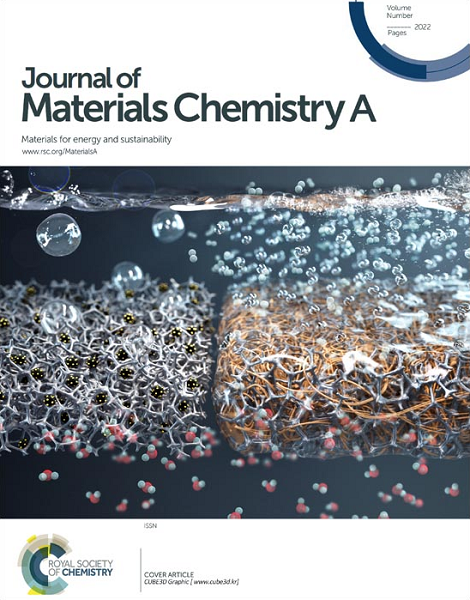A facile strategy to design shape memory rubber composites with tunable mechanical properties and photothermal performance
IF 9.5
2区 材料科学
Q1 CHEMISTRY, PHYSICAL
引用次数: 0
Abstract
Shape memory polymers (SMPs) represent a prominent category of smart polymers that show attractive prospects in emerging fields of soft robots and biomedical devices. However, most of the existing SMPs show limitations in single-stimulus responsiveness and an imbalance between mechanical and shape memory properties. Herein, biological phytic acid served as a natural curing agent to vulcanize the biobased epoxidized natural rubber (ENR), while Fe3+ was introduced to construct a second cross-linked network based on coordination interaction. Polycaprolactone (PCL) was introduced and acted as net points to regulate the shape fixing behavior, while the dual cross-linked network provided strong resilience to achieve the shape recovery performance. Meanwhile, the Fe3+-based coordination complex not only served as sacrificial elements to realize tunable mechanical properties by effectively dissipating energy, but also acted as a photothermal agent to realize the light-induced shape memory behavior and thermoelectric power generation. The fabricated composites process multi-stimuli-responsive shape memory properties, photothermal capabilities, and tunable mechanical properties, exhibiting outstanding potential in harvesting sunlight for outdoor portable power generation and stimuli-responsive sensors.设计具有可调机械性能和光热性能的形状记忆橡胶复合材料的简单策略
形状记忆聚合物(SMPs)代表了智能聚合物的一个突出类别,在软机器人和生物医学设备等新兴领域显示出诱人的前景。然而,大多数现有的smp在单刺激响应方面存在局限性,并且在机械和形状记忆特性之间存在不平衡。本研究以生物植酸作为天然固化剂对生物基环氧化天然橡胶(ENR)进行硫化,并引入Fe3+构建基于配位相互作用的第二交联网络。引入聚己内酯(PCL)作为网点调节其固形行为,双交联网络具有较强的弹性,实现了形状恢复性能。同时,Fe3+基配合物不仅可以作为牺牲元件通过有效耗散能量实现可调的力学性能,还可以作为光热剂实现光致形状记忆行为和热电发电。该复合材料具有多刺激响应形状记忆性能、光热性能和可调机械性能,在户外便携式发电和刺激响应传感器收集阳光方面具有突出的潜力。
本文章由计算机程序翻译,如有差异,请以英文原文为准。
求助全文
约1分钟内获得全文
求助全文
来源期刊

Journal of Materials Chemistry A
CHEMISTRY, PHYSICAL-ENERGY & FUELS
CiteScore
19.50
自引率
5.00%
发文量
1892
审稿时长
1.5 months
期刊介绍:
The Journal of Materials Chemistry A, B & C covers a wide range of high-quality studies in the field of materials chemistry, with each section focusing on specific applications of the materials studied. Journal of Materials Chemistry A emphasizes applications in energy and sustainability, including topics such as artificial photosynthesis, batteries, and fuel cells. Journal of Materials Chemistry B focuses on applications in biology and medicine, while Journal of Materials Chemistry C covers applications in optical, magnetic, and electronic devices. Example topic areas within the scope of Journal of Materials Chemistry A include catalysis, green/sustainable materials, sensors, and water treatment, among others.
 求助内容:
求助内容: 应助结果提醒方式:
应助结果提醒方式:


